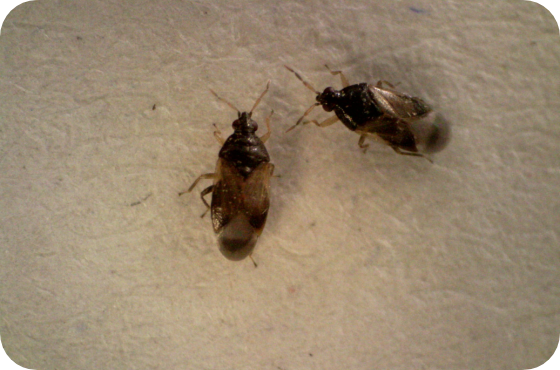Quality Products
Fast Delivery
Premium Service
Written by Jan-Paul de Wit | Last update: 23. December 2022
The Orius predatory bug serves as a powerful biological enemy. With its unique feeding mechanism, Orius uses its specialized proboscis to extract fluids from thrips at all life stages—egg, larva, and pupa—causing death to the trips.

The Orius is a predatory bug. Each day, a female Orius lays one to three eggs on the plant’s leaves or stems and within roughly five days, these eggs hatch into nymphs. The newly emerged Orius nymphs are yellow-brown with distinctive red eyes and are unable to fly, so they have to search for their prey by walking around. Typically, you’ll find these predatory bugs residing in the flowers and on the leaves of plants.
From egg to adult, the Orius undergoes a complete development cycle in approximately three weeks when maintained at 25°C. As temperatures get lower, this process extends. The fully matured Orius, identifiable by its brown hue, becomes highly mobile, thanks to its well-developed wings.
The Orius, both in its nymph and adult stages, are effective in thrips control and black thrips control. This predatory bug is renowned for its unique ability to fight adult thrips. Beyond thrips, Orius is also powerful against spider mites, moth and butterfly eggs, and other harmful insects. Its versatility makes Orius an excellent choice for comprehensive greenhouse pest control.
For optimal results when using Orius as a natural pest control solution, distribute the predatory bugs across your plants, either by scattering them over the surface of a pot or directly onto the leaves. It's best to release Orius in groups of around 100 individuals. To ensure effective pest management, perform at least two releases with a 7 to 14-day gap between them, adjusting for seasonal conditions.
For ease of application, consider using introboxes, which help you monitor where the Orius has been applied. To enhance their establishment and effectiveness, supplement with Powerfood, which supports robust population growth.
When working with Orius, you should avoid using pesticides or other chemicals that could harm these beneficial insects. Always verify compatibility between your chosen products and Orius to ensure they can coexist. Additionally, refrain from removing any new shoots or suckers from the greenhouse after releasing Orius to support its effectiveness and longevity.